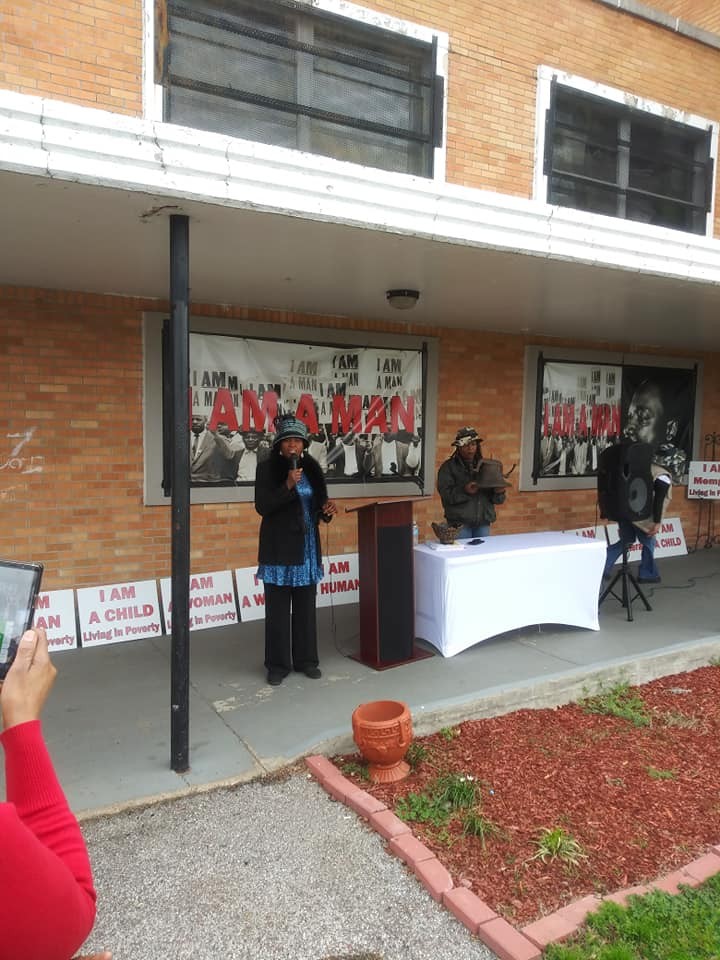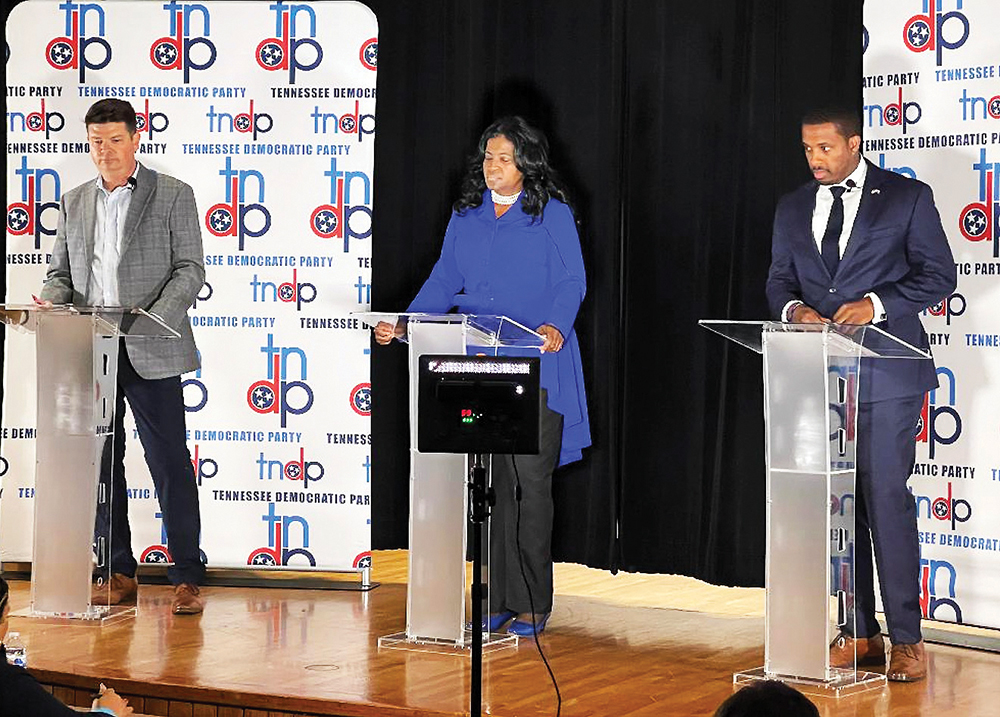 Facebook- Carnita Atwater
Facebook- Carnita Atwater
Atwater speaks against the Memphis 3.0 plan at a rally Saturday
A lawsuit filed by members of the community caused the Memphis City Council on Tuesday to again delay voting on the Memphis 3.0 plan.
Carnita Atwater, president of the New Chicago Community Development Corporation, told the council that they were being “disrespectful to the African-American community because the 3.0 plan is “blatant racism.”
Atwater and about a half a dozen more attendees at Tuesday’s meeting spoke in opposition of the plan, saying that it was not inclusive.
In a Wednesday press release, Atwater, who is African American said that the lawsuit was filed on behalf of the “impoverished African-American communities that have endured decades of disinvestment.”
“The Memphis 3.0 Comprehensive Plan fails to include any relevant or substantive financial investment in beleaguered African American Communities,” Atwater said. “The benefits of the plan are not inclusive, nor does it address racial equity in a city experiencing selective disinvestment, targeted gentrification, and low-income displacement.”
[pullquote-2]
The lawsuit was filed in federal court Tuesday against the council, the Shelby County Commission, Memphis Mayor Jim Strickland, Shelby County Mayor Lee Harris, and Gov. Bill Lee. The move is meant to stop the city council from voting on the plan.
Atwater’s key argument is that the Memphis 3.0 does not include plans for the New Chicago neighborhood and other African-American communities in the city.
However, the 465-page document does detail improvements for New Chicago, the surrounding North Memphis neighborhood, and other predominantly African-American areas in the city.
Within New Chicago itself, the plan outlines two anchors to be nurtured. The document says nurturing means providing stability to areas not experiencing growth.
Atwater has said that the plan does not give funding to the most “dis-invested in neighborhood in the city.”
But, based on the 3.0 document, anchors to be nurtured will see investments by the city and philanthropies to support improvements.
The first anchor is the intersection of Chelsea and Ayers, where the document suggests creating a garden district with the vacant land there and conducting an urban farming feasibility study.
At the intersection of Breedlove and Firestone, just a half a mile away from the New Chicago CDC headquarters, the plan lists 11 action items.
Some of them include improving the aesthetics of the area, supporting small businesses and community-based organizations and initiatives, identifying funding sources for facade improvements, and conducting an environmental assessment.
Near New Chicago, the crossing of Watkins and Brown is another anchor where the plan looks to support affordable housing, create adaptive reuses for abandoned buildings, and identify alternate uses for vacant land such as urban agriculture and parks.
The other anchors in North Memphis include Jackson and Watkins, Chelsea and Hollywood, Jackson and Hastings, and the Douglass Park Area.
Finally, for the entire North Memphis district, the plan indicates a slew of issues that need to be addressed, such as the need for a full-service grocery store or other ways to access fresh foods, improved sidewalks, additional bike lanes, and other infrastructure improvements.
In South Memphis, another area of the city largely populated with African Americans, the plan lists six anchors to be nurtured and two to be accelerated, or boost existing changes in the community.
Those anchors include Mississippi and Walker, Third and Belz, Elvis Presley and Alcy, and Soulsville.
[pullquote-1]
Actions for this district touch on affordable housing, neighborhood beautification, as well as improved public parks, sidewalks, and accessibility. Like North Memphis, accessible fresh foods is also a priority in the plan.
Read the priorities for each district here beginning on page 243.
Atwater also expressed concern Tuesday about how the plan will gentrify African-American communities, while displacing communities of color and “forcing them out of the city of Memphis.”
Beverly Clay, who is African American, is another opponent of the plan. She said Tuesday that the 3.0 plan has “obvious omissions of our areas” and that it is “inexcusable.”
Supporting the plan Tuesday, Roshun Austin, president of The Works CDC in South Memphis, said the plan is a “map and a guide, because it provides us with what’s here today and suggestions for a brighter future. “
“It does not dictate the route we will take to get to our destination,” Austin said. “It does not detail all of the opportunities or encumbrances.”
Gary Rosenfeld, president and CEO of the Memphis Area Transit Authority, also spoke in support of the plan Tuesday, saying that the plan has “already demonstrated its ability to have a positive effect on our community.”
Ultimately, the council decided to delay the first of the three votes on the plan for two weeks to allow the council attorney Allan Wade and city of Memphis attorney Bruce McMullen to review the lawsuit.


 Facebook- Carnita Atwater
Facebook- Carnita Atwater